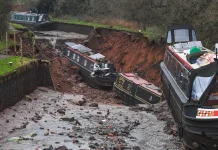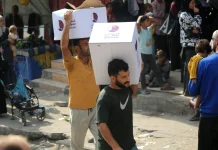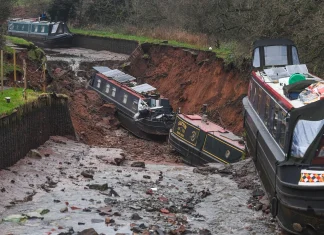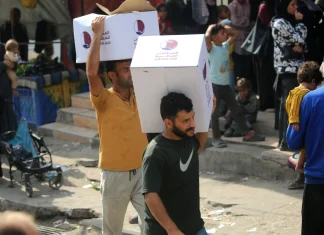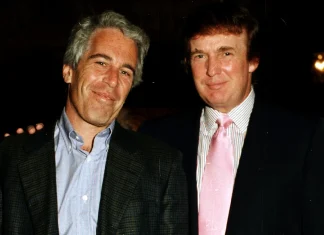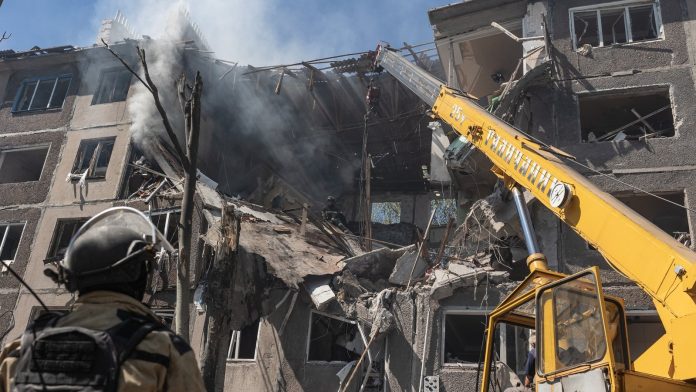
The High-Stakes Chessboard: NATO’s Quiet Moves Toward Peace and the Somber Reality on Ukraine’s Frontlines
Imagine a sprawling, global stage where diplomats, generals, and world leaders maneuver with cautious intent, weighed down by the grievous toll of a war that has reshaped the geopolitical landscape. This week, the NATO military chiefs from its 32 member nations settled into a digital summit at 1:30 pm Irish time, their task both urgent and delicate: to sketch the blueprint for potential security guarantees for Ukraine. These discussions are more than protocol—they are the currency of hope, and yet, as the world’s military minds convene behind encrypted screens, the war on the ground grinds onward, relentless and merciless.
The Diplomacy of Hope and Hesitation
In a time when every conversation could tilt toward peace or deepen conflict, a notable discussion unfolded on the evening before NATO’s meeting. Top US military officer, General Dan Caine, Chairman of the Joint Chiefs of Staff, held a series of back-channel talks with his European counterparts exploring “the best options for a potential Ukraine peace deal.” A US defense official described these conversations as delicate negotiations aiming to thread the needle between a workable peace and the harsh realities of war.
Yet, the names behind the headlines bring more texture to this picture. President Donald Trump, who recently returned from a high-profile sit-down with Russian President Vladimir Putin in Alaska, gathered Ukrainian President Volodymyr Zelensky and European leaders at the White House. This meeting wasn’t mere symbolism—it was a microcosm of the wider global struggle to find a lasting solution. Trump’s ambivalence about the billions poured into Ukraine’s defense has sparked debate. While he rejected deploying US troops, he hinted at providing air support as a form of backing for Ukraine, though details remained evasive.
“We’re going to find out about President Putin in the next couple of weeks,” Trump acknowledged, hinting at the opaque nature of negotiating with the Russian leader. For Kyiv and its Western allies, the optimism stirred by Trump’s declaration that Putin might meet Zelensky is tempered by caution. What exactly would these “security guarantees” look like? The uncertainty fuels both hope and skepticism.
Ground Realities: Advances and Agony
Meanwhile, the war itself stomps on with grim momentum. Russia’s Ministry of Defense, through its Telegram channel, announced fresh territorial gains in the contested Donetsk region, capturing the villages of Sukhetske and Pankivka. These are not just dots on a map—they sit near a recent breakthrough where Russian forces pierced Ukrainian defenses between the critical logistics hub of Pokrovsk and Kostiantynivka, a detail that underscores the strategic gravity of these advances.
On the civilian front, the numbers paint a heartbreaking snapshot. In Kharkiv’s eastern territory, a Russian drone strike on a humble civilian vehicle claimed two lives. Then came an overnight barrage of glide bombs hitting housing in Kostiantynivka, leaving up to four trapped beneath the rubble, according to Sergiy Gorbunov, the local military administration chief.
And the attacks reverberated further. The northeastern Ukrainian town of Okhtyrka in the Sumy region reported at least 14 wounded from overnight air strikes, including three children, as disclosed by regional governor Oleg Grygorov.
These ongoing assaults cast a somber shadow over diplomatic talks and underscore the urgency of escalating pressure on Moscow. As President Zelensky poignantly noted, “These strikes show the need to intensify pressure on Moscow, including through tighter sanctions.”
Searching for the Shape of Peace: Venues, Visions, and Vexations
Talk of peace depends not only on the willingness of leaders but also on where they meet. Since the White House summit, discussions have floated ideas of Budapest and Istanbul as potential venues for a trilateral summit involving Zelensky, Putin, and Trump. Hungary’s Prime Minister, Viktor Orbán, a figure known for preserving close ties with Putin, represents a rare European destination where the Russian president might travel without fear of arrest for International Criminal Court charges.
Yet, the question looms large: would Ukraine accept Hungary as neutral ground? Some skepticism surrounds these choices, given the fraught political landscapes.
Switzerland also surfaces as a contender, ready to host peace talks with its longstanding neutrality and diplomatic tradition. But the diplomatic dance remains slow, cautious, and riddled with the intricacies of trust.
The Contrasts of Leadership and the Complexity of Conflict
President Zelensky’s recent warm rapport with Trump stands in stark contrast to their frosty meeting earlier this year—an evolution emblematic of the unpredictable theater of international politics. As one Washington insider noted, Trump approaches these tangled alliances more by “instinct than process,” a stance that both unsettles and fascinates experts pursuing the art of diplomacy.
Meanwhile, Russia remains steadfast in rejecting NATO troop deployments to Ukraine, an explicit “red line” reaffirmed recently. Moscow’s demands for territorial control also remain unwavering, with Putin holding firm on land claims even after the Alaska summit.
Neil Melvin, Director of International Security at the Royal United Services Institute think-tank, offers a sobering analysis. “Russia may be seeking to drag out the war by engaging in prolonged peace talks,” he suggests, “while deflecting US pressure. Both sides are wary of appearing as the roadblock to peace in front of President Trump.”
Indeed, the geopolitical calculus now includes the nuanced dance around Trump’s peace initiative. Melvin comments on the vague nature of Trump’s security proposals: “It’s difficult to take some of the recent comments seriously, given their ambiguity.”
The Human Cost and Call to Reflection
Beyond the maps and strategy lies the heart-wrenching human cost—more than a million dead or wounded since the conflict erupted in February 2022. Each number represents a life altered or lost, families upended, futures stripped away.
For readers across the globe, this conflict is more than a distant headline. It is a stark reminder of the fraying world order, the fragile promises of peace, and the collective responsibility to remain informed and compassionate. Could renewed diplomacy yet break through? Will the subtle moves in NATO’s virtual meeting ripple into real-world calm? Or will the war’s brutal realities continue to eclipse every hopeful word?
As these questions hang in the air, the story unfolding demands attention—not just as a political spectacle but as the lived experience of millions. In the final reckoning, peace will not arrive from lofty talks alone but from shared resolve, empathy, and the courage to imagine a future where such a devastating conflict becomes a relic of history, not an ongoing tragedy.
What Lies Ahead?
The coming weeks are pivotal. With discussions on additional sanctions within the Coalition of the Willing and emerging plans to coordinate security guarantees between the US and Europe, the diplomatic machinery is grinding forward. The entire world watches, hopeful and wary.
Will the elusive peace deal take shape? Will the next global conversations reflect real progress or merely tread water? And most importantly, how can we, as global citizens, support the voices calling for justice, dialogue, and above all, humanity?
As you read this, consider:
- How do you perceive the role of global alliances like NATO in shaping peace and security today?
- What are the ethical implications of foreign involvement in conflicts like Ukraine?
- How can international diplomacy balance power, principle, and the profound human cost of war?
In these moments of uncertainty, one truth remains certain—the story of Ukraine is a reflection of our shared humanity, and its resolution, a measure of our collective will.


